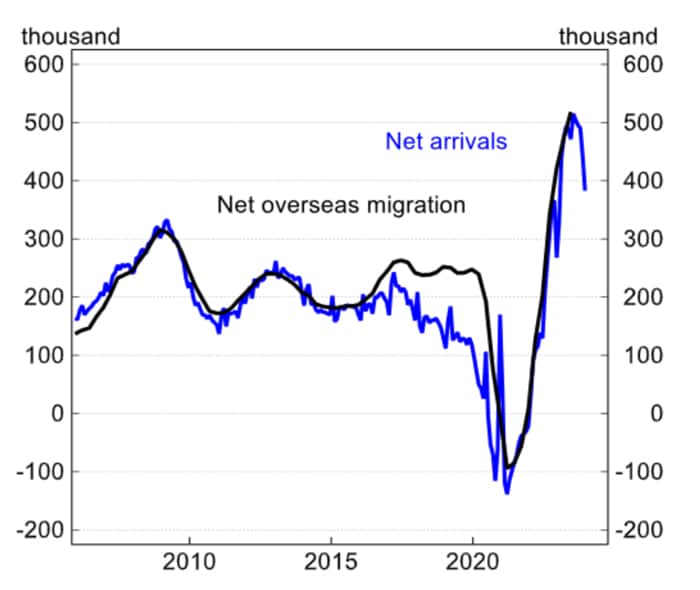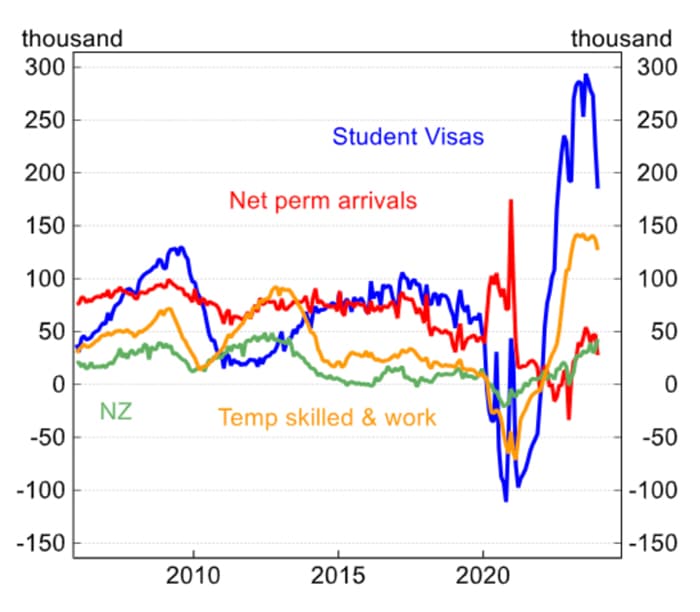Australia’s new immigration settings implemented in the second half of 2023 to deter fraudulent students from entering the nation under false pretenses of studying by closing immigration loopholes. According to data from the Department of Home Affairs, 19% of applicants were denied a study visa in the first half of Australia’s fiscal year, suggesting that these are already having an effect.
If that rate of rejection persists, there will be 91,715 fewer students that will get study visas in 2023–2024 than there were in 2022–2023 (577,295 visas), which is a 15% decrease.
For comparison’s sake:
- 10% of visas were refused in 2018–19.
- 8.5% were refused in 2021/22.
- 14% were refused in 2022/23.
Table of Contents
Who will Australia’s immigration Strategy Affect?
Due to the nature of the Australian government’s December 2023 immigration overhaul, certain applicants have a significantly higher chance of being accepted than others. Due to initiatives like the following, students now have a greater burden of proof when applying:
- Increased standards for proficiency in English;
- A mandatory “Genuine Student Test” to identify and reward individuals who are more likely to: (1) have education as their primary goal rather than employment; and (2) contribute the necessary skills to the Australian economy.
Those who are seeking lower credentials are the ones who are most likely to have their visa requests denied. Phil Honeywood, CEO of the International Education Association of Australia, explains:
“The focus has been on winding back a large number of diploma-level vocational students doing courses such as diplomas of leadership, and instead the primary focus is on students who can add skills to the Australian economy.”
Australia’s new approach to managing its international sector also includes:
- examining applications from high-risk students with more scrutiny;
- taking action against dishonest educators;
- bolstering the Department of Home Affairs’ student visa integrity unit to prevent abuse of Australia’s student visa program;
- tightening regulations for foreign education providers.
Given that immigration officials now have more tools at their disposal to weed out non-genuine students, the increased scrutiny is leading to higher rates of visa refusal. A spokesman for the Department of Home Affairs stated:
“The department has seen increasing levels of integrity concerns across the student visa program. They (the department) received higher levels of fraudulent documents, fraud related to English language testing, non-genuine claims, and non-genuine subsequent marriages being presented in student visa applications. The department will refuse a visa application to non-genuine applicants who do not meet regulatory requirements and where fraud is present.”
Education Minister Jason Clare commented: “The Albanese government’s migration strategy and the other integrity measures we’ve put in place send a clear message that we will act to prevent the exploitation of students and protect Australia’s reputation as a high-quality international education provider.”
Decline in Net migration
The new Australia immigration strategy will negatively impact net migration. When the government was drafting the policies, this was one of their intentions. Similar to Canada, Australia has experienced a spike in the number of new international students in recent months, which has exacerbated the country’s housing crisis and reduced public support for welcoming more immigrants.
MacroBusiness.com reports that “the latest monthly arrivals and departures data from the Australian Bureau of Statistics (ABS) suggests that Australia’s net overseas migration (NOM) has passed its peak… As shown in the next chart, monthly net arrivals are finally falling from record highs.”

Net overseas migration to Australia. Source: MacroBusiness.com
According to the following chart, the decline in net migration is because of the decline in the number of international students arriving.

Australian net arrivals by type of visa. Source: MacroBusiness.com
How international education policies will affect the entire economy
The governments of Australia, Canada, and the UK have altered immigration policies in recent months to influence the movement of foreign students across their borders. They have each gone about it quite differently.
- Canada’s strategy comprises additional measures in addition to a blanket limit on the quantity of new study permits that will be issued over the following two years;
- Most overseas students are no longer permitted to enter the UK with their dependents.
- Australia has adopted a more focused strategy, implementing numerous minor adjustments that together deter particular types of students, agents, and institutions from abusing the system.
According to recent data from the Department of Home Affairs, there is a likely 15% decrease in visa approvals for 2023–2024 (assuming the current refusal rate continues). This suggests that, in comparison to what might occur in Canada and the UK, the Australian approach could lead to a more selective and mild decline in the number of new international students.
Canada suspends study permit processing for many students – and even without considering the impact of the two-year cap and other measures, that will lower the number of students entering the nation this year. Alongside the new ban on student dependents, demand from students in top source markets in the UK is already beginning to decline.
Australia seeks balance with its new immigration Strategy
However, Australia’s government appears to be striking a balance between the enormous economic benefits of having international students and the requirement for increased systemic integrity. The government’s statements and the policies themselves indicate that the goal of the new immigration regulations is to deter fraudulent students rather than to reduce demand from all overseas students.
The Australian Bureau of Statistics reports that during the first three quarters of 2023, the contribution of international education to the Australian economy was AUS$34 billion, a 68% increase compared to a 4.8% decline in other export categories. Universities Australia anticipates that the sector will contribute a total of AUS$41 billion in 2023, exceeding the record set in 2019.
What does the Chief Executive of Universities Australia, Catriona Jackson say about Australia new immigration strategy:
“Education is the biggest export we don’t dig out of the ground. It makes us tens of billions of dollars each year, supports tens of thousands of jobs, and helps pay for the essential services all Australians rely on. Beyond that, it makes us friends, acting as a bridge between nations and supporting regional stability, which is only becoming more important in a fast-changing strategic environment.
Australia has developed a strong, competitive edge in the global battle for international students through our careful and strategic work over many decades. Any changes that restrict the movement of these people to our shores need to be weighed carefully against the enormous benefits they bring, during and after their studies.”
While the UK’s contribution to the sector has been estimated at £41.9 billion (USD$53.2 billion), Canada has benefited economically from international education to the tune of CDN$22 billion (USD$16.4 billion) in recent years. International students contributed almost US$38 billion to the US economy in 2022–2023.
Read Also:
UK lists companies eligible to sponsor Nigerians’ work visa in 2024
List of Scholarships in Australia for International Students 2025









